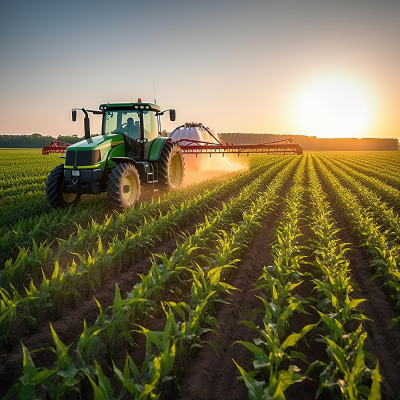Agriculture Industry
Home > Agriculture Industry
Agriculture Industry
The agriculture industry in India heavily relies on diesel generator (DG) sets for power due to the inconsistent nature of the electricity grid. This is especially important for irrigation, which is crucial for a large part of Indian agriculture.
DG Set Requirements:
- Capacity: The necessary DG set capacity depends on the farm size and the connected load (irrigation pumps, processing equipment, etc.). Farmers typically use DG sets with capacities ranging from 5 kVA to 100 kVA, sometimes even higher.
- Fuel efficiency: Because of the need for continuous operation, fuel efficiency is a major concern. Farmers often look for DG sets with lower fuel consumption to reduce operating costs.
- Durability and reliability: DG sets must withstand tough operating conditions (dust, heat, humidity) and provide reliable power for long hours, often without interruptions.
- Portability: For some applications like harvesting and threshing, portable DG sets are preferred for mobility.
Compliances:
Using DG sets in agriculture comes with various environmental regulations, mainly focusing on emissions and noise pollution. Key compliances include:
- Central Pollution Control Board (CPCB) norms: These norms specify emission limits for different categories of DG sets based on their power output. Farmers need to ensure their DG sets comply with the latest CPCB emission standards.
- State Pollution Control Boards (SPCBs): SPCBs may have additional regulations and guidelines for DG set usage in their respective states. Farmers need to be aware of and comply with these local regulations.
- Noise pollution norms: DG sets must adhere to permissible noise levels to minimize disturbance. This often involves using acoustic enclosures or proper mufflers to dampen the noise.
- Registration and permits: In some states, DG sets may need to be registered with the relevant authorities, and farmers may need to obtain permits for their operations.
Additional Considerations:
- GRAP (Graded Response Action Plan): In regions with severe air pollution, like the National Capital Region (NCR), the GRAP may impose restrictions on DG set usage during certain periods. Farmers in these areas need to be aware of and comply with these restrictions.
- Retrofitting emission control devices: Older DG sets can be retrofitted with emission control devices (ECDs) to meet the latest emission norms.
- Shifting to cleaner fuels: There is a growing push towards using cleaner fuels like biodiesel or natural gas in DG sets to reduce emissions.


Challenges:
- Cost of compliance: Meeting emission norms and other compliances can add to the cost of DG sets and their operation.
- Lack of awareness: Many farmers may not be fully aware of the latest regulations and compliance requirements.
- Enforcement: Enforcement of DG set regulations can be challenging, especially in remote agricultural areas.
The Future:
- Renewable energy: The government is promoting the use of renewable energy sources like solar power in agriculture to reduce reliance on fossil fuels.
- Hybrid solutions: Combining DG sets with renewable energy sources can provide a reliable and sustainable power solution for agriculture.
It’s crucial for farmers to stay updated on the latest DG set regulations and adopt cleaner technologies to ensure environmental sustainability and compliance.

